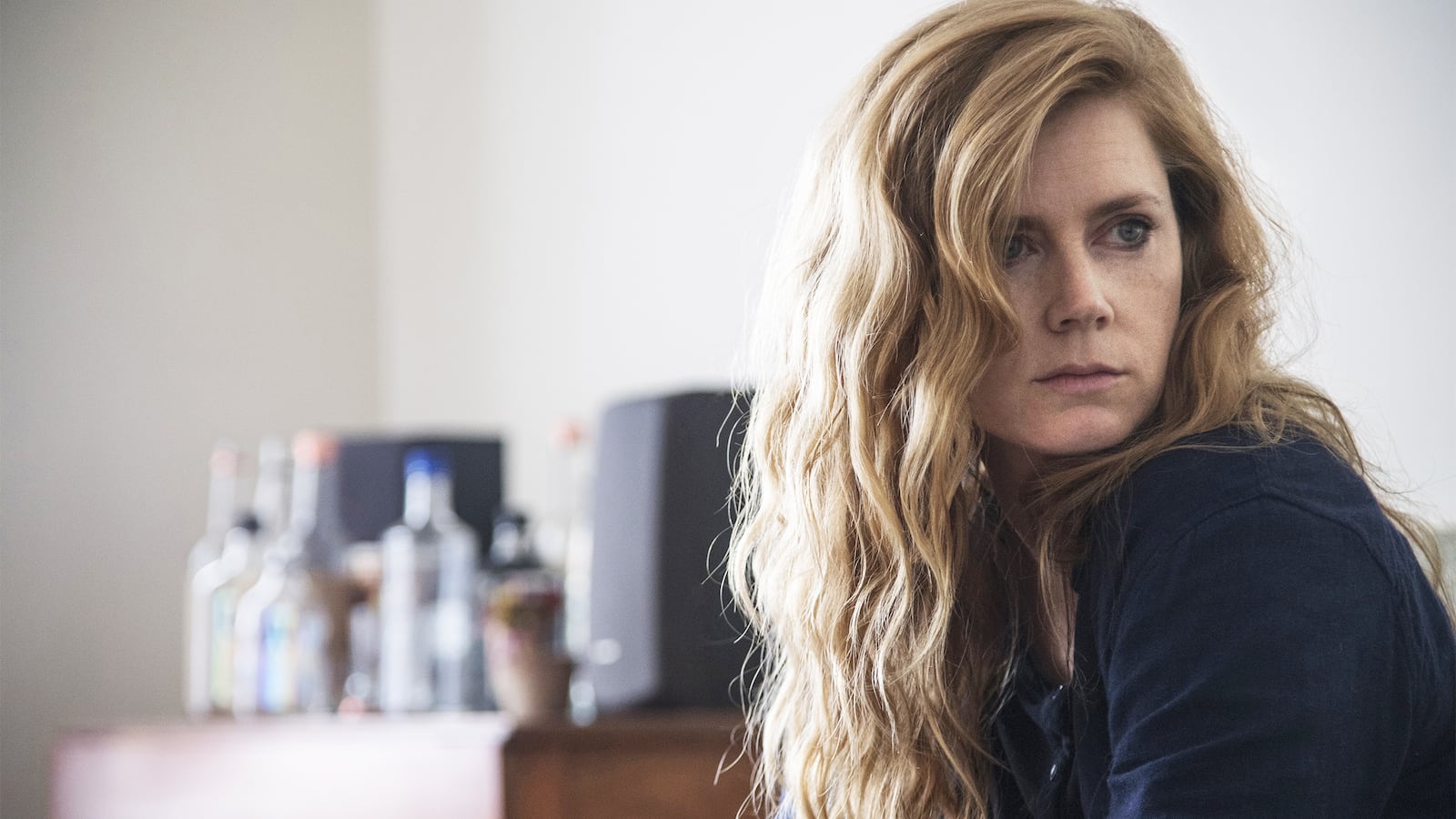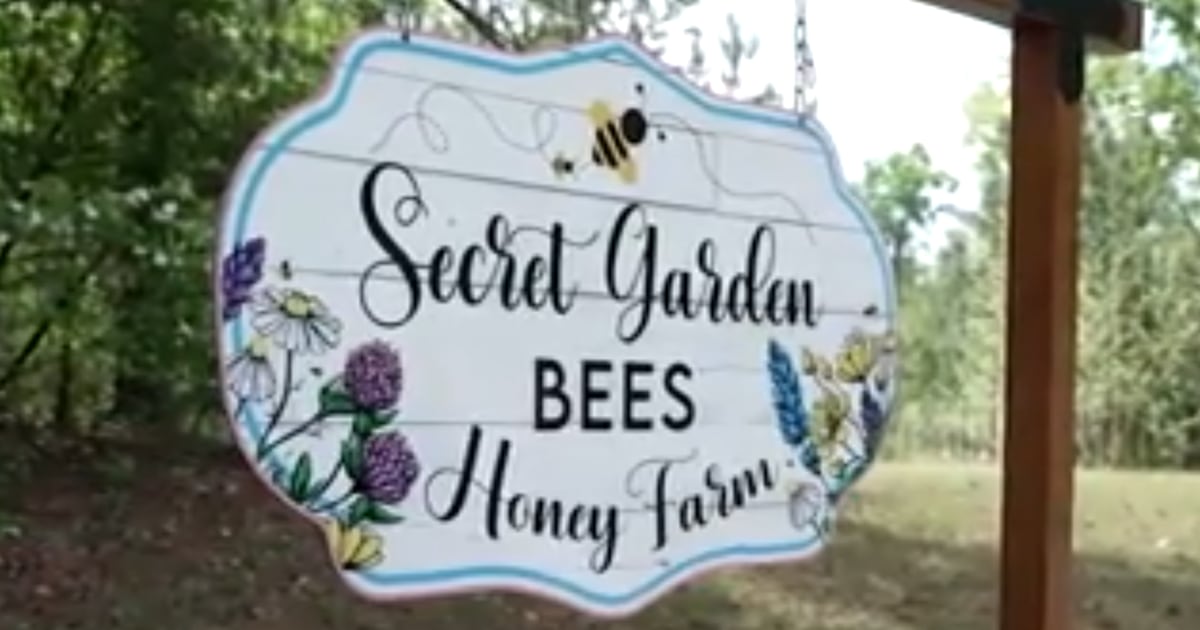Madeline and Celeste would never stand for this much sweating. They’d have fled to their Buicks and Lexuses, cranked up the A/C, and high-tailed it out of Wind Gap, Missouri, faster than a Monterey PTA mom could down a bottle of chardonnay. The further Sharp Objects’ small-town setting fades in the rearview mirror, the more uniquely special the series, being hailed as the next Big Little Lies, becomes.
The comparisons, of course, are inevitable.
Both are HBO series based on hot-selling, female-centric books, in this case Gone Girl writer Gillian Flynn’s trailblazing debut novel. (Would you believe that in 2006, no publisher thought women would want to read a dark story centered around an angry, challenging female protagonist?) Whereas Big Little Lies saw TV veteran David E. Kelley (Ally McBeal, The Practice) shepherd the screen adaptation, Sharp Objects has Marti Noxon (Buffy the Vampire Slayer, UnREAL, Dietland) at the helm. Jean-Marc Valée directs every episode of both series.
They’re juicy, female-led stories with unrivaled pedigree on both sides of the camera. Oh yes, Sharp Objects sees your casting of Reese Witherspoon, Nicole Kidman, and Laura Dern and meets it by hiring Amy Adams in the lead, with phenomenal work by Patricia Clarkson and Elizabeth Perkins in supporting roles.
And then there’s one final, inarguable similarity between the projects: They’re both damn good.
In Sharp Objects, Adams is Camille Preaker, the prodigal daughter returning to her hometown and troubled family to report on the murder of one young girl and the mysterious disappearance of another. She wears the pain of her Wind Gap past—her body is nearly entirely scarred from years of cutting—and medicates it with a fairly open alcohol addiction.
Adams is approaching Streep-level work, not just here but in her career. It’s that thing where it’s no surprise that she is, once again, excellent. As with Meryl Streep, the real surprise is in the ways she manifests that excellence.
Camille’s discoveries while reporting her investigations leave her equally disturbed and perplexed. She’s clearly out of her element, though her big-city bonafides seem to fool Wind Gap’s citizens. Her past traumas start to stitch an oppressive veil over her eyes. She sleepwalks through her days, typically inebriated. Townspeople, however, won’t stop talking about her glory days, and occasionally she lets crackles of that superlative former self shine through.
She’s clearly delicate, and perhaps unsure if she feels like bothering to appear strong anymore. That insecurity is betrayed by the slightest flicker in Adams’ eye, translating to a tectonic shift in emotion from an actress this skilled in face acting. (Face acting: It’s a thing, and it’s hard!) As Camille meanders through the show’s eight episodes, spelunking through the depths of her inner turmoil and a town’s dark secrets, you never bat an eye before following her.
“She’s delicate; a rare rose, but not without her thorns.” That’s how Camille’s mother, Adora, played by a never-better Patricia Clarkson, describes her daughter to a visiting detective (a sweat-soaked and hunky Chris Messina), illustrating their fraught relationship.
They share a trauma and, as such, resentment. So, too, do they share an addictive desire to protect each other, just one of many ways Flynn so brilliantly crafts character: In what ways are we served by our attachment to our mothers, and in what ways are we ruined by what they pass down?
Adora is an odd duck in Wind Gap, in that she’s the impoverished town’s ruling swan, proprietress of an opulent manor estate with undue influence over the dusty, trailer-park dotted factory town. She’s a steel magnolia, but a wilting one. Clarkson’s genius is in signaling the subtle desperation with which Adora tries to collect the fallen petals.
Messina is a dutiful furrowed brow and enjoyable foil for Adams’ Camille, and Elizabeth Perkins adds a welcome, intoxicating kick to her every scene as gossipy neighbor Jackie, much like the vodka-spiked sweet tea she’s sipping when we first meet her. But the show’s most valuable supporting character is its mood, the sense of dread that blankets this reeling town—a town that can’t handle the heat of being smothered by much else.
One of the most engrossing, and, in turn, haunting elements of Flynn’s prose in Sharp Objects is a feeling of disorientation, both Camille’s as she dizzyingly circles her sense of self and the readers’ as they meander through her murder mystery maze. Unreliable witnesses, unprofessional detectives, and, in Camille, an unsure narrator each contradict as they direct our way through.
Marc-Valée’s flash-cut visual cues, leaping back and forth through time and inserting hallucinations and memory recalls, cleverly recreates that mood. Seizing on the series’ meticulously drawn sense of place—the sweltering South in a paranoid small community—he produces the clever suspicion that everything you’re watching could possibly be a fever dream.
In contrast to Big Little Lies, this is not a series that will be quoted or meme’d, or inspire fan posts celebrating scene-stealing characters. Sharp Objects isn’t quippy. The title riffs on the pricks and cuts Camille inflicts and the emotional stab wounds of the past that take so long to heal. In Big Little Lies, those attacks are verbal. (And, yes, deliciously fun.)
Both series are prestige plays on familiar genres often dismissed because of the presumed gender of the interested audience and the kinds of characters often at the center—in other words, “messy women.” Everything Big Little Lies did to embrace, dignify, and elevate the soap opera genre’s female characters and tropes, Sharp Objects does with pulp mystery.
But then again, lumping these two elegant, compulsively watchable series together for comparison is, in its own way, a sexist dismissal of these uniquely excellent and largely dissimilar works.
We wish we were immune to that retrograde packaging impulse, and we’re aware that we’re in fact complicit in it. But we sheepishly hope that any whisperings of Sharp Objects alongside the towering work done by the Big Little Lies team will bring the former the same kind of accolades and fan interest that the latter was rewarded with. And, with blind faith in the ever-discerning taste of TV audiences, that viewers won’t turn away when they realize just how different the shows really are.
Aesthetically, the distinction is fairly obvious. Camille drives a dilapidated Volvo, feasts on a smorgasboard of mini vodka bottles and vending machine snacks, and her iPhone screen is shattered. The defeated, perspiring streets of Wind Gap are a long way from the salty air of Monterey.
Both series explore the ways in which secrets are weapons—ones we often wield ourselves—memories shape us, and the past is in inextricable conversation with the present. We’re so concerned with the harm being done to others—one child hits another in Big Little Lies, two girls experience tragedy in Sharp Objects—that we often ignore the harm we’ve done to ourselves. But these are universal human experiences that shouldn’t be corralled into the same branding because the stories we’re exploring belong to women.
That’s one more thing to condemn about the impulse of Big Little Lies comparisons: the fact that series like these, with rich material and complex leads worthy of talents this prodigious, are still this rare.
For all the talk of how much better television has gotten for women, both in front of and behind the screen, it’s still a scorched-earth landscape. There are such isolated examples of shows like Big Little Lies that, when parched, we plead for the only example of sustenance we can remember having.
There have been great female-led series in the year and a half since Big Little Lies premiered, but none have attained the sheer cultural dominance it fostered, and that Sharp Objects seems the most likely contender to achieve. We’re waiting for that flood of more to come, but we’re still being fed drops.
Not that we’re not grateful those drops include a series like Sharp Objects.






